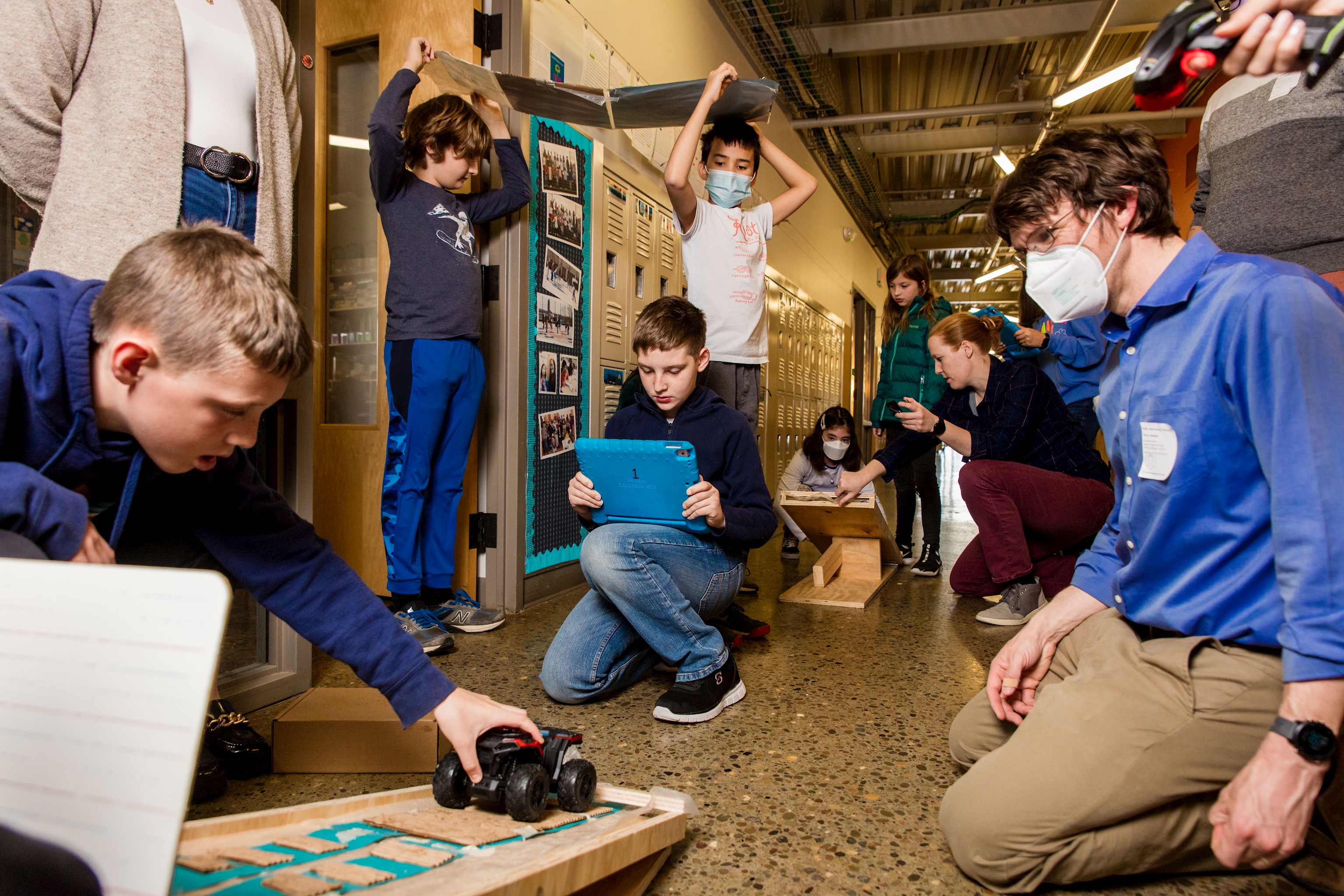Discover our
Home for Learning
- Contact
- 412-624-8020
- [email protected]
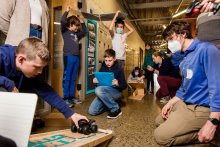
A Falk Lab School teacher works with an engineer and a researcher to learn how best to teach engineering concepts to elementary students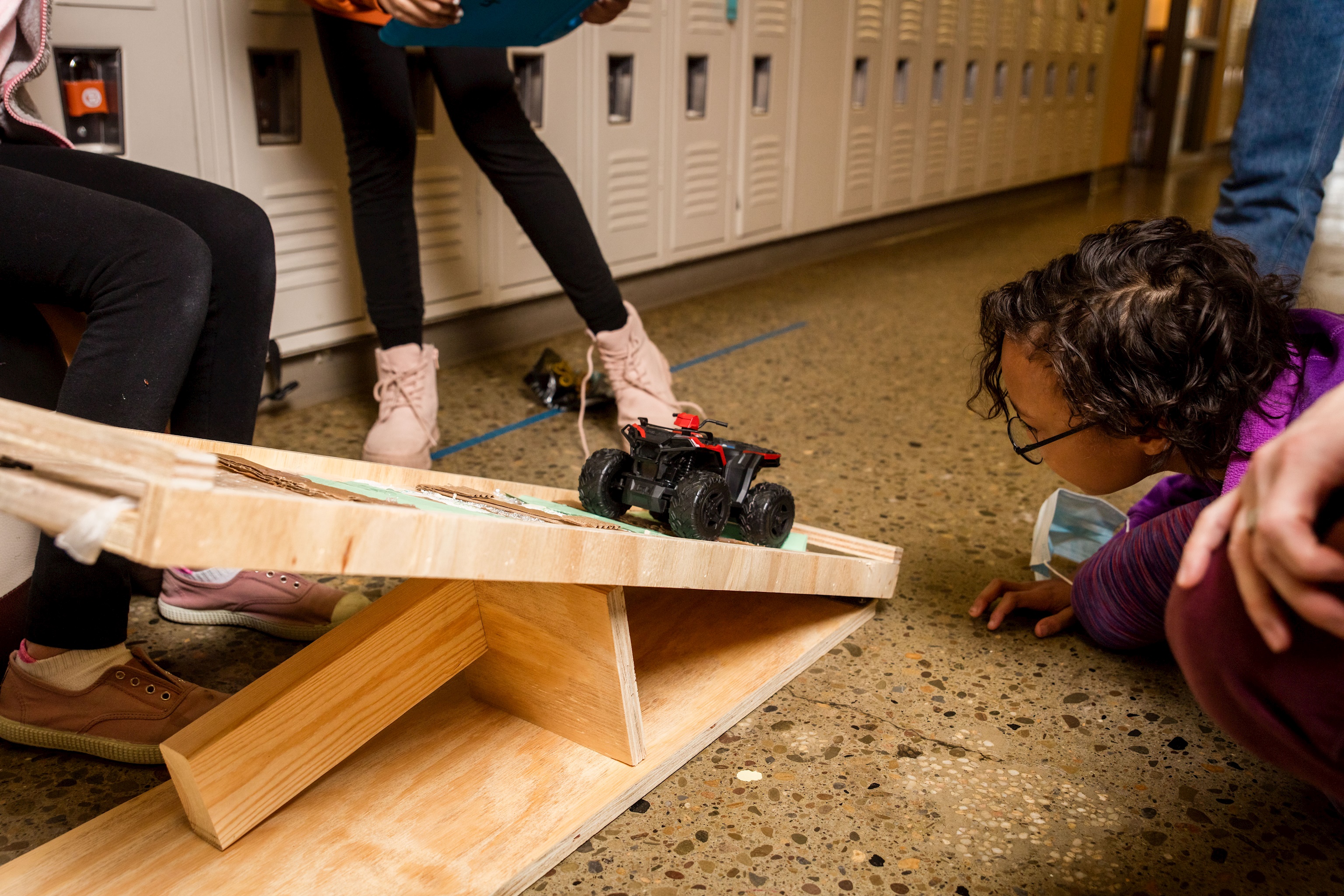
Students lean over wooden boards, marked in the center with 3-by-3-inch boxes made of blue masking tape, and fine-tune their designs. Wooden blocks go sliding across the boards, some clanking off onto the floor while others come to rest near the blue square. On the projector screen to one side of the classroom, a timer ticks down from 15 minutes.
The six groups in Autumn Dillaman’s fifth-grade class are all facing the same challenge: build a “kicking machine” capable not only of moving a wooden block across the wooden board and into that center square, but doing so gradually. (Projected onto the screen is an image of a crash-test dummy with the caption “Gradual—meaning you don’t want your block to get whiplash!”)
Some groups are tackling the challenge with ramps, while others have built devices that look more like slingshots. Some groups use materials like paper, bubble wrap, tin foil, and fabric to slow their block enough to land it gently in the blue square.
With just a few minutes left, groups put the finishing touches on their kicking machines. Dillaman checks in with different groups, asking questions and offering words of advice. 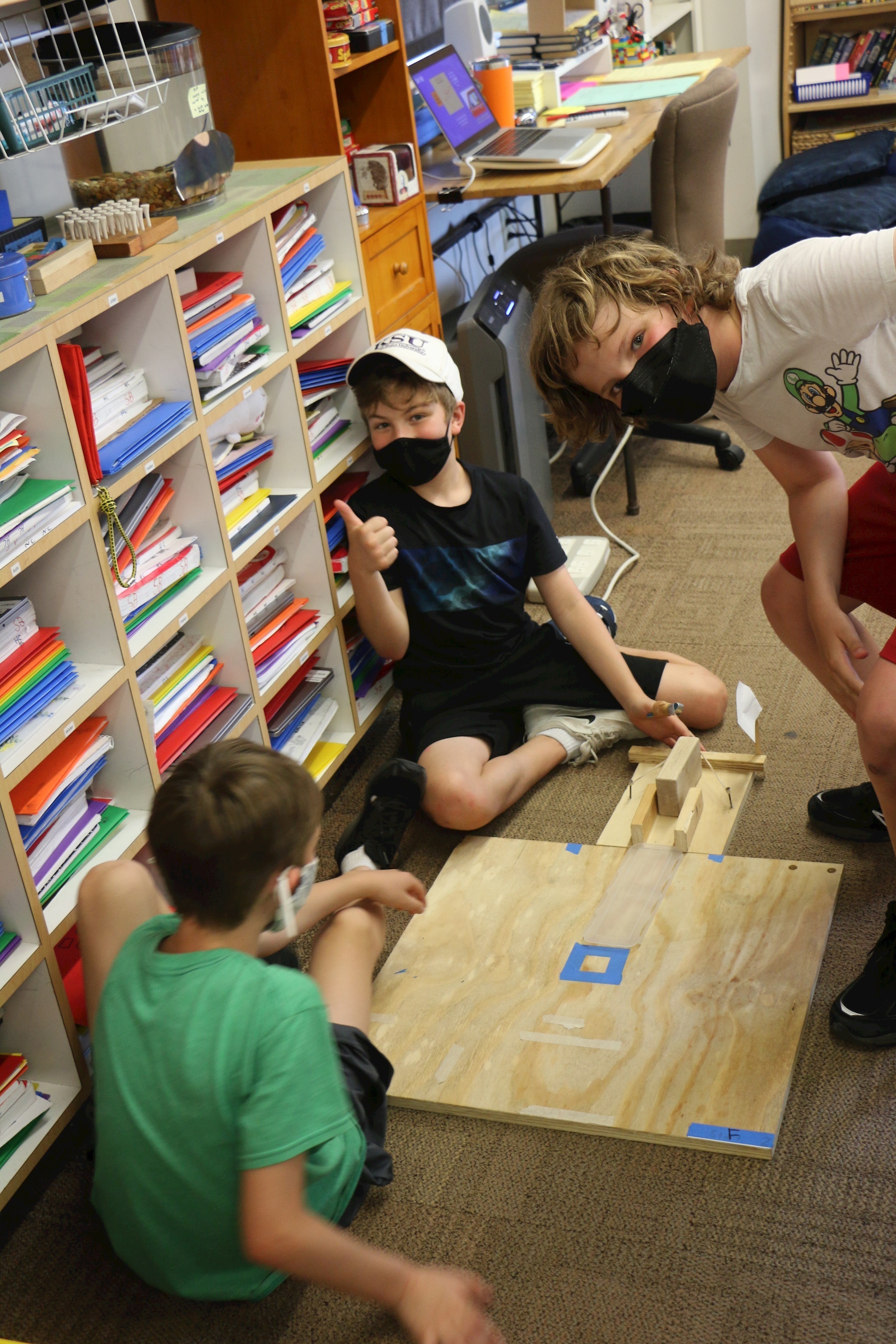
“Make sure you’re doing it consistently,” she counsels one group.
“Was your board set up correctly?” she asks another.
Today’s task is the latest in a series of design challenges Dillaman, currently Falk’s Division Director, Elementary, has given students this semester. First, they built machines capable of flinging the block clear across their 24” by 24” boards, learning about friction and how to reduce it. Next, they reintroduced friction in order to land the block in a six-inch “end zone” at the far end of the board.
Another in the series of friction-based challenges focused on the real-world problem of traffic on an icy road. Students had to modify a wax paper-covered ramp to enable a toy car up to the top. The ramp started out at an angle of 12 degrees and got steeper as the students discovered new insights.
These challenges are all part of a much bigger project, one initiated in 2019 by Tevis Jacobs, associate professor in the University of Pittsburgh’s Swanson School of Engineering, who received a National Science Foundation (NSF) grant to prototype a unit that would help teach engineering concepts to elementary school students. Since first receiving the grant, Jacobs has partnered with Dillaman and Pitt School of Education associate professor Katrina Bartow Jacobs, Falk Lab School’s research coordinator, to implement the project.
Delayed and complicated by the pandemic, it's a project with a range of important goals, from lowering the barriers that keep students from pursuing engineering careers to establishing a new model for how research is conducted at Falk Lab School.
The E in STEM
Jacobs was moved to apply for the NSF grant by research showing that achievement gaps between boys and girls, and between white students and students of color, open as early as middle school.
“That’s when you begin to see a decline in interest among girls and students of color,” he says.
He was also motivated by a sense that in conversations about STEM learning, the science, technology, and math parts of that acronym are well represented while the e for engineering is often underdeveloped. It’s a condition that the National Academy of Engineering attributes to teachers feeling underprepared and perhaps less confident in teaching engineering-focused lessons.
Creating a resource that empowers teachers to introduce engineering concepts with more confidence, Jacobs reasoned, would not only benefit students in an individual class but empower teachers to include more engineering content, from design thinking to using constraints, in future lessons.
Because of Falk’s laboratory-school designation, Jacobs realized it would be an ideal place to pilot a module, refine it by working with Dillaman and Bartow Jacobs, and ultimately share it with other schools.
The end product won’t be a boxed unit, Jacobs says, but a series of concepts, with multiple options for building ramps, for example, and enough flexibility that the project can be duplicated in any school, and at low cost.
Design Thinking
One of the risks of teachers feeling less than comfortable teaching engineering, and of the E in STEM being underrepresented, is that the field can continue to seem mysterious and remain difficult to enter. 
“Many kids don’t get access to it,” says Bartow Jacobs. “It doesn’t attract kids who don’t have access already.”
One barrier is the language of engineering, including design thinking. Introducing students to those core principles was built into the project.
For Dillaman, the project has been a fantastic entry point to useful concepts like defining a problem, ideating, working with constraints, prototyping, and testing a proposed solution. More broadly, she says, students are trying out key skills like resilience and problem solving.
Before building their first ramps, the fifth-graders engaged in “speed prototyping,” brainstorming and considering many options before zeroing in on a particular design concept.
“We talk a lot about the design process,” says Dillaman, “and not getting married to a specific design.”
Along the way, Dillaman prompts students to examine their process and articulate their rationale for choosing a certain design.
“What’s your rationale for sticking with this one thing?” she asks.
Make It Interesting
In determining the content of the project, Jacobs went with what he knew: surfaces. His own research as an engineer looks at everything from the surface of flooring to the role that the surface of a brain implant can play in how well the implant takes hold in the brain.
Making sure the friction ramp challenges were engaging and interesting was important. 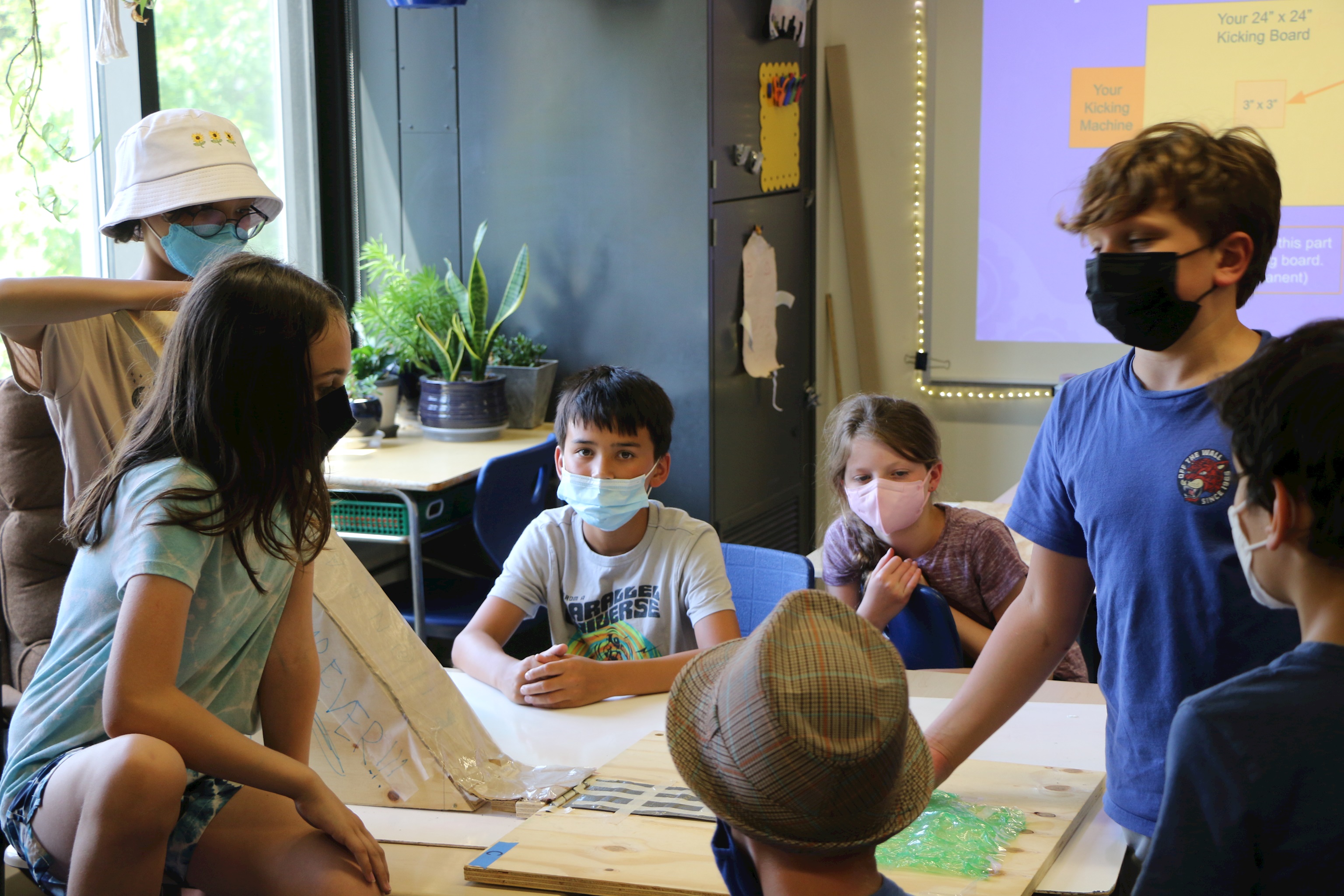
“Research has shown that when people are interested in projects with real-world applications, that boosts interest universally,” he says. “But it has an especially strong effect among people who are getting other messages that they don’t belong.”
That means girls and students belonging to underrepresented groups. In a traditional math class, members of both these groups might start to pick up on a sense that they’re not expected to be good at or interested in the topic.
“But when you have the response, ‘Oh, that’s an interesting problem,’ or ‘Let me figure out how to solve this problem,’” Jacobs says, “that gets people excited and engaged.”
Jacobs says he learned a tremendous amount from working closely with Dillaman to create the challenges and build lesson plans for each stage of the project.
“We came in with different sets of expertise and went through the process of defining the problem, then ideating,” he says. “We used the engineering design process to teach the engineering design process.”
No Final Success 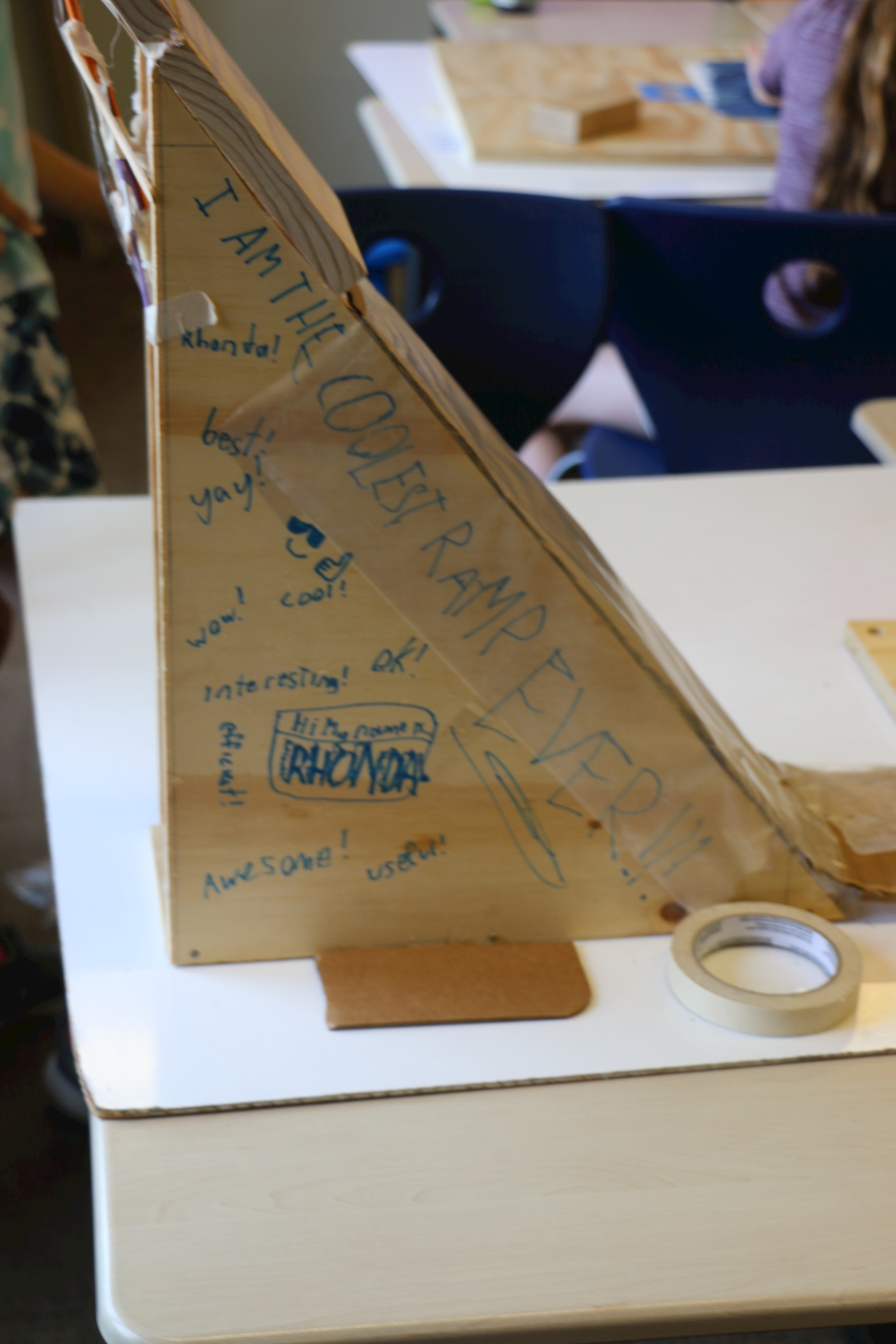
Bartow Jacobs conducted pre-tests to see how much, and how well, students understood core engineering concepts and principles, and to see how much engineering appealed to the students. Her post-tests will ask similar questions to look for shifts in student mindsets and to assess how much their core understanding has grown.
Observing the students’ work, Bartow Jacobs took field notes on how well students worked together. The unit was designed so that students never achieve final success and are never simply done: if they managed to get their kicking machine to put a block in a certain place, a new challenge was added, or they were given fewer glue sticks to work with, or no longer allowed to use a certain material. The important thing, says Bartow Jacobs, is the process.
One of the biggest challenges for students at this age, she says, is getting an idea and not running with it. But over the course of the unit, with Dillaman’s emphasis on rapid prototyping—questioning ideas and trying to generate new and different ones—groups have been willing to modify, adapt, and even re-think their original concepts. The first challenge, making the icy Allequippa hill passable for motorists, provides an excellent example.
“They wanted to build a moving walkway, or an elevator,” says Bartow Jacobs. “Those are great ideas, but they’re not addressing the challenge.”
She adds, “Understanding constraints can help you solve the problem.”
A Model for Research at Falk
In addition to advancing the goals laid out in Jacobs’ grant, Bartow Jacobs calls the NSF project “a model for research at Falk,” and hopes it can serve as a framework for future research projects at the school.
“It was important to have Autumn involved in the project from day one,” she says. “This was truly a shared development of the ideas. This was a collaborative team working together to improve the school.”
That deep collaboration stands in contrast to prior models for research at Falk, in which a research team from the School of Education or outside Pitt arrives with a research question already firmly in mind. There’s nothing wrong with that approach, says Bartow Jacobs, but involving Falk educators in the central design of this study marks an exciting new possibility.
“Our goal for research at Falk is to take a truly collaborative approach,” she says. “In this model, a research state of mind is part of the culture of the school.”
In that sense, the research team is itself experiencing a process of discovery and iteration not unlike the collaborative processes the fifth-graders have employed in designing their kicking machines.
“We haven’t done this before,” Bartow Jacobs tells the students. “You’re helping us learn what the parameters are.”
Engineers Who Look Familiar
In addition to pre-project tests, Bartow Jacobs asked students to draw pictures of what they thought an engineer looked like. She then examined the pictures for markers of gender and race to gain a picture of what—and who—the students see when they picture an engineer.
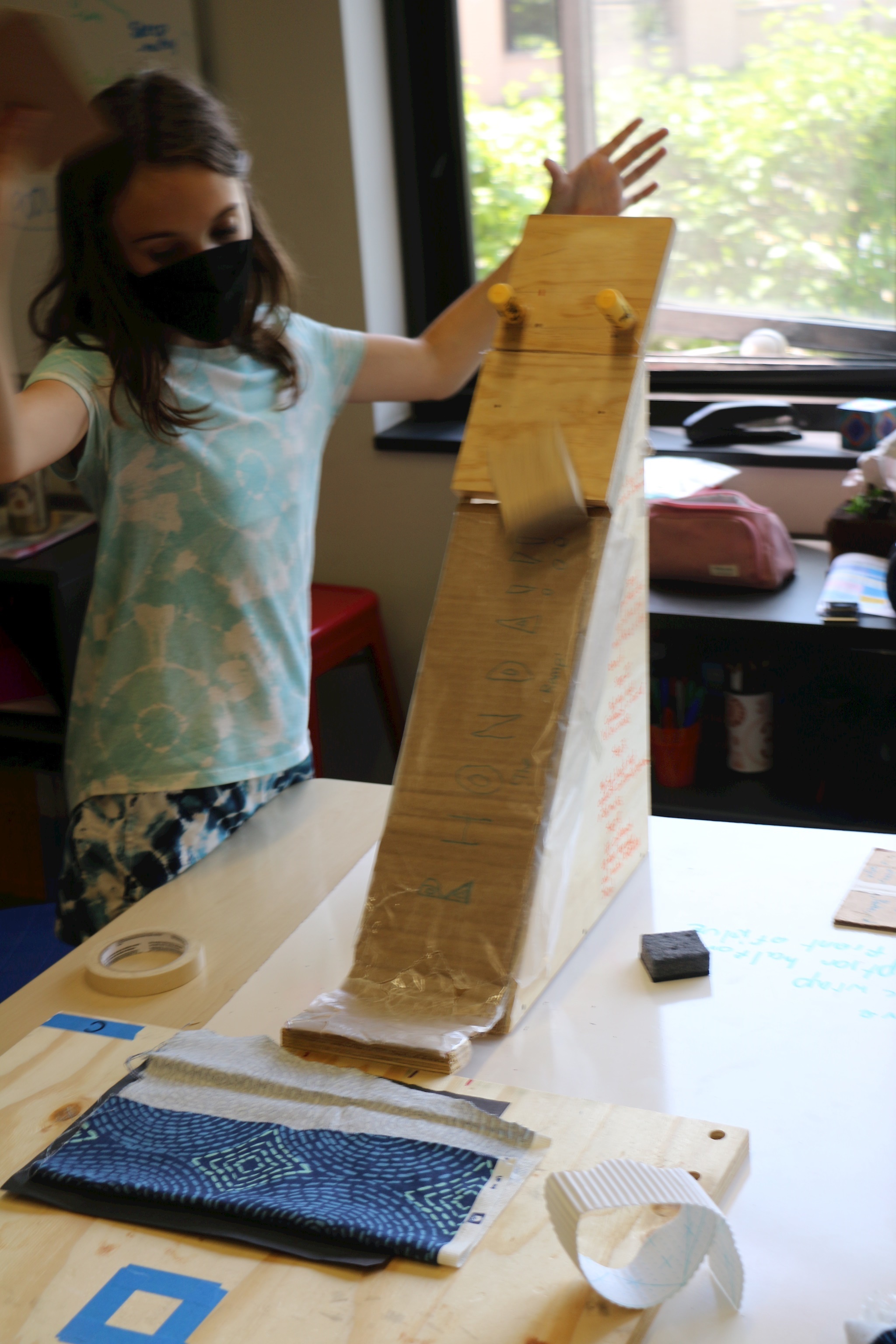 That was something the team wanted to address in recruiting mentors to help students work through the design process. Jacobs reached out to a number of groups at the Swanson School of Engineering, including its chapters of the National Society of Black Engineers, the Society of Hispanic Professional Engineers, and the Society of Women Engineers.
That was something the team wanted to address in recruiting mentors to help students work through the design process. Jacobs reached out to a number of groups at the Swanson School of Engineering, including its chapters of the National Society of Black Engineers, the Society of Hispanic Professional Engineers, and the Society of Women Engineers.
“One of the ways that research has shown we can confront these disparities in gender and race in the field is to use mentors to show people others who look like them,” Jacobs says. “Here are women who are excellent at math, for example.”
Having that diverse set of faces in the classroom was a critical element of the project, says Dillaman. A majority of the Swanson School of Engineering mentors were women, and a number were women of color.
“It was powerful to see students of color seeing these engineers,” Dillaman says, “and recognizing that engineering is not just something men do.”
Making Thinking Visible
With just a few minutes left, groups put the finishing touches on their kicking machines. Then the timer goes off and it’s time for each group to present its kicking machine.
But before they fling their blocks or release them down a ramp, a spokesperson for each group gives the class some background information, explaining the team’s thinking and describing some of the issues they’ve had to address in preparing to land their block in the center square. One group found that fabric alone was not enough of an obstacle, but folding the material over a square of aluminum foil provided the necessary friction. Another group describes getting the block into the square on their trial runs, but doing so too abruptly—their block would have ended up with whiplash. Ms. D challenged them to look for a more elegant solution.
After one group’s kicking machine launches, Dillaman asks, “What might you do to fine-tune it?” Students in other groups raise their hands with suggestions.
Even for the groups that have landed their blocks smoothly and consistently, today’s test is just one step in the design process. Tomorrow will bring a new challenge, and another chance to iterate.
